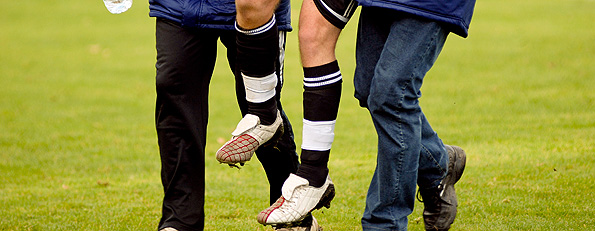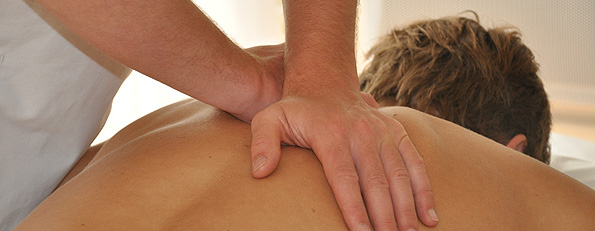Carpal Tunnel
Carpal tunnel syndrome is pressure on the median nerve — the nerve in the wrist that supplies feeling and movement to parts of the hand. It can lead to numbness, tingling, weakness, or muscle damage in the hand and fingers.
Causes, incidence, and risk factors
The median nerve provides feeling and movement to the “thumb side” of the hand (the palm, thumb, index finger, middle finger, and thumb side of the ring finger).
The area in your wrist where the nerve enters the hand is called the carpal tunnel. This tunnel is normally narrow, so any swelling can pinch the nerve and cause pain, numbness, tingling or weakness. This is called carpal tunnel syndrome.
Carpal tunnel syndrome is common in people who perform repetitive motions of the hand and wrist. Typing on a computer keyboard is probably the most common cause of carpal tunnel. Other causes include:
- Sewing
- Driving
- Assembly line work
- Painting
- Writing
- Use of tools (especially hand tools or tools that vibrate)
- Sports such as racquetball or handball
- Playing some musical instruments
The condition occurs most often in people 30 to 60 years old, and is more common in women than men.
A number of medical problems are associated with carpal tunnel syndrome, including:
- Bone fractures and arthritis of the wrist
- Acromegaly
- Diabetes
- Alcoholism
- Hypothyroidism
- Kidney failure and dialysis
- Menopause, premenstrual syndrome (PMS), and pregnancy
- Infections
- Obesity
- Rheumatoid arthritis, systemic lupus erythematosus (SLE), and scleroderma
- Numbness or tingling in the thumb and next two or three fingers of one or both hands
- Numbness or tingling of the palm of the hand
- Pain extending to the elbow
- Pain in wrist or hand in one or both hands
- Problems with fine finger movements (coordination) in one or both hands
- Wasting away of the muscle under the thumb (in advanced or long-term cases)
- Weak grip or difficulty carrying bags (a common complaint)
- Weakness in one or both hands
Symptoms
Signs and tests
During a physical examination, the doctor may find:
- Numbness in the palm, thumb, index finger, middle finger, and thumb side of the ring finger
- Weak hand grip
- Tapping over the median nerve at the wrist may cause pain to shoot from the wrist to the hand (this is called Tinel’s sign)
- Bending the wrist forward all the way for 60 seconds will usually result in numbness, tingling, or weakness (this is called Phalen’s test)
Tests may include:
- Electromyography
- Nerve conduction velocity
- Wrist x-rays should be done to rule out other problems (such as wrist arthritis)
Treatment
You may try wearing a splint at night for several weeks. If this does not help, you may need to try wearing the splint during the day. Avoid sleeping on your wrists. Hot and cold compresses may also be recommended.
There are many changes you can make in the workplace to reduce the stress on your wrist:
- Special devices include keyboards, different types of mouses, cushioned mouse pads, and keyboard drawers.
- Someone should review the position you are in when performing your work activities. For example, make sure the keyboard is low enough so that your wrists aren’t bent upward while typing. Your doctor may suggest an occupational therapist.
- You may also need to make changes in your work duties or recreational activities. Some of the jobs associated with carpal tunnel syndrome include those that involve typing and vibrating tools. Carpal tunnel syndrome has also been linked to professional musicians.
MEDICATIONS
Medications used in the treatment of carpal tunnel syndrome include nonsteroidal anti-inflammatory drugs (NSAIDs) such as ibuprofen or naproxen. Corticosteroid injections, given into the carpal tunnel area, may relieve symptoms for a period of time.
SURGERY
Carpal tunnel release is a surgical procedure that cuts into the ligament that is pressing on the nerve. Surgery is successful most of the time, but it depends on how long the nerve compression has been occurring and its severity.
Expectations (prognosis)
Symptoms often improve with treatment, but more than 50% of cases eventually require surgery. Surgery is often successful, but full healing can take months.
Complications
If the condition is treated properly, there are usually no complications. If untreated, the nerve can be damaged, causing permanent weakness, numbness, and tingling.




